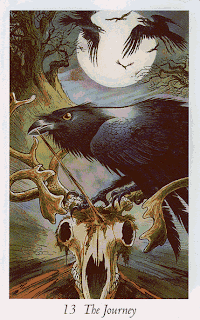As we all know by now, I am supposed to be writing a book about my tarot deck. I love writing. I also thoroughly enjoy cooking and going for long walks and keeping my daughter happy. I have a few things I must do now and again, such as washing diapers and dishes and maybe some dusting on days when a blue moon falls on an odd-numbered Monday in May. Occasionally I sleep.
So I said to myself, “You know, Jess, you’ve already written plenty of stuff that no one’s ever going to see. Why don’t you just make a book of that?”
And I said to myself, “That’s a great idea!”
I’m not sure if I was aware at the time that it was a procrastination technique. It is a great idea! Here you go:
I have years of poetry behind me. Reams of it. One of the most delightful things to write is love poetry, or poetic love letters. I could put it together in a little book, match the poems with three-card readings in which The Lovers is modified by two other cards that would describe the flavor of love in the poem, and I could call it The Lovers— Love Poetry & Tarot Readings. So I began.
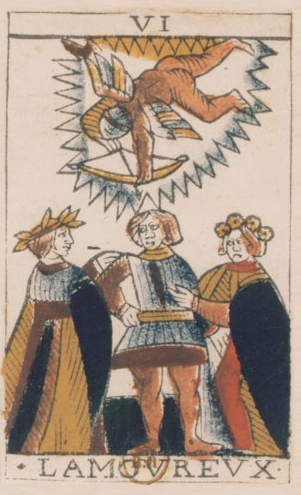
image from the Jean Noblet Tarot
I chose a number of poems then gave them all three-card readings. Now I am trying to decide how to order them. Meanwhile, I get nervouser and nervouser because— well— these are all virgin love poems. So few of them have been seen by eyes aside from mine! Plus, I have no idea if they hang together well enough to form a book.
Whether or not anyone would actually purchase— let alone read— a book of love poetry is beside the point. I suspect maybe I would give a copy to Martin and a copy to my bestest of friends and then it would just be available on Amazon for random strangers to stumble across in the same manner that one stumbles across a needle in a haystack or an eyelash in a football field. Why, why have I spent my life writing poetry if not to share with the eyes of others? Is poetry merely a masturbatory form of writing?
In my 20s I went through the existential phase of “I write, therefore I exist.” Those things that are written are the things that make history. It was my method of self-manifestation: my Alchemist holds a pen.
Question: If a writer writes and no one is there to read it, does the writer exist?
Answer: Objectively, no. The human who writes does not exist as a “writer” in the eyes of “writer”-label givers unless the words that were written are read.
Someone wrote to me recently: “You would make a good writer.” To which I respond: “You would make a good reader.”
Enough of this existentialism.
Following is a sampler of the most diverse (not the best) of my love poetry and their associated three-card reads. But who would read this stuff? I mean, really. Who would read? Gosh, I hope nobody is reading this…
* * *
Expecting W___ in Oaxaca
(Lovers, Star, Knight of Cups)
This country is another world.
My bed is full of chocolate crumbs.
My patio crawls with cockroaches.
On the day you arrive
And ring the brass bell
Before the green gate,
I will sweep the tiles free from ants
And wash between my toes.
* * *
Two Verses for P___
(Lovers, 7 of Blades, 2 of Cups & Lovers, 5 of Blades, 4 of Blades)
I.
October—
I did not seek your kisses, mister.
I did not try to learn the way
your whiskers feel upon my neck
And be this as it may:
That I take pleasure in your touch
and would not mind the chance
to explore your navel
to see if I can find the universe inside,
I would give back all knowledge
of your affection
For the pure and simple freedom
found in unencumbered friendship.
II.
November—
The world was so loud in my ears that day,
I could not hear the words you said.
Your lips moved, your body moved,
shirtless, around the cab of that red truck—
but I did not heat the words you said!
I only heard the words you meant to say:
“Get away,
get away—
get—
away.”
* * *
I was wanting to kiss someone.
Do you like kisses?
I can send you some.
(Lovers, Alchemist, Page of Cups)
Send me your lips. Send me
the teeth behind your lips,
send the tip of your tongue,
the whiskers on your cheek.
Send an earlobe, the nape of your neck,
some fingertips.
Send the side of your nose,
and I will press mine against it.
I will place my fingers on your neck,
my thumb light against your jaw bone,
my lips on your mouth,
and I will press against your teeth.
Your rough cheek on my smooth cheek,
your hand on my back,
your fingers, the back of my head.
Send breath, and breathe against me.
Send a heartbeat,
and let me place my ear against your chest.
Send me all of you for kissing.
I will kiss.
* * *
Yuk!
What is this
“love”
stuff?





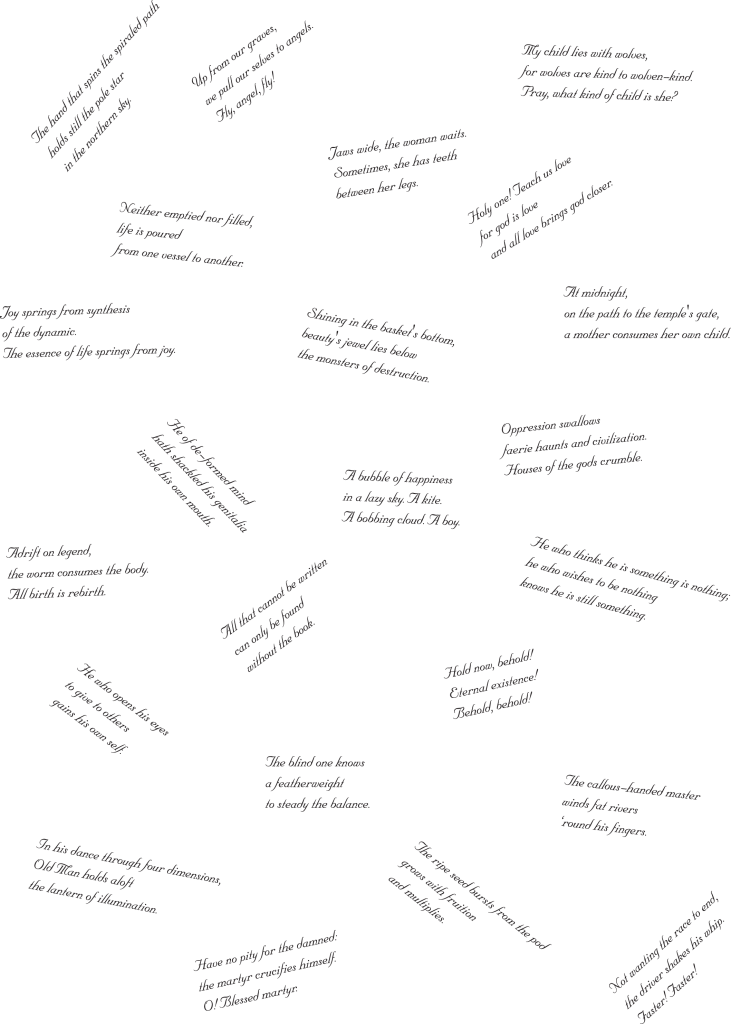
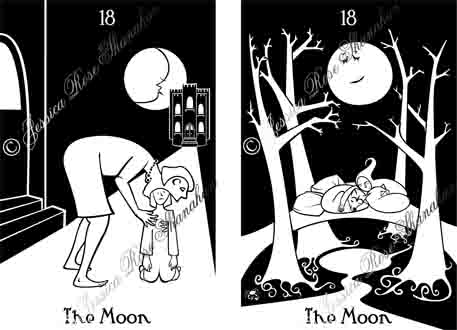
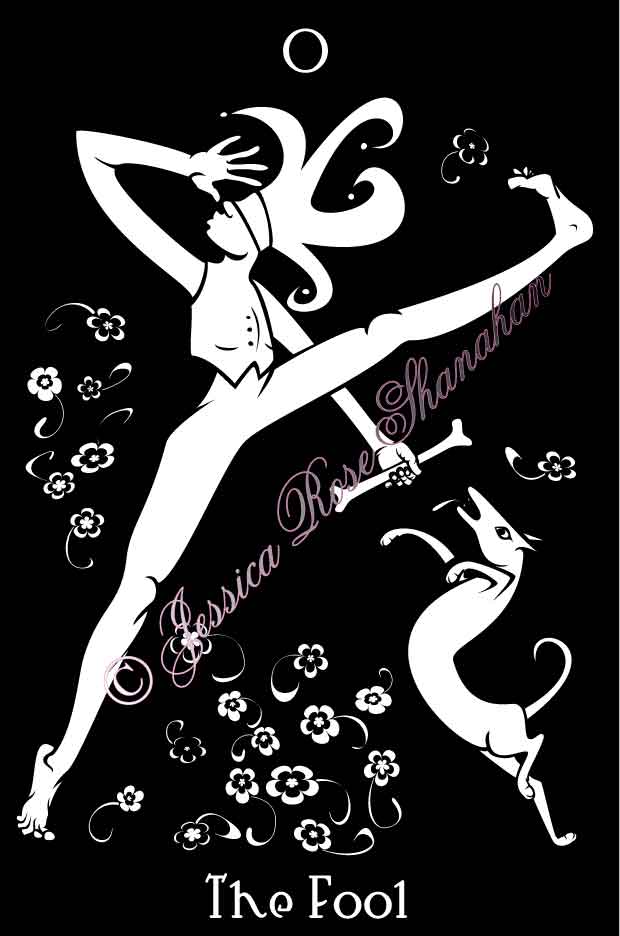 ‘If the fool would persist in his folly he would become wise.’ —William Blake
‘If the fool would persist in his folly he would become wise.’ —William Blake

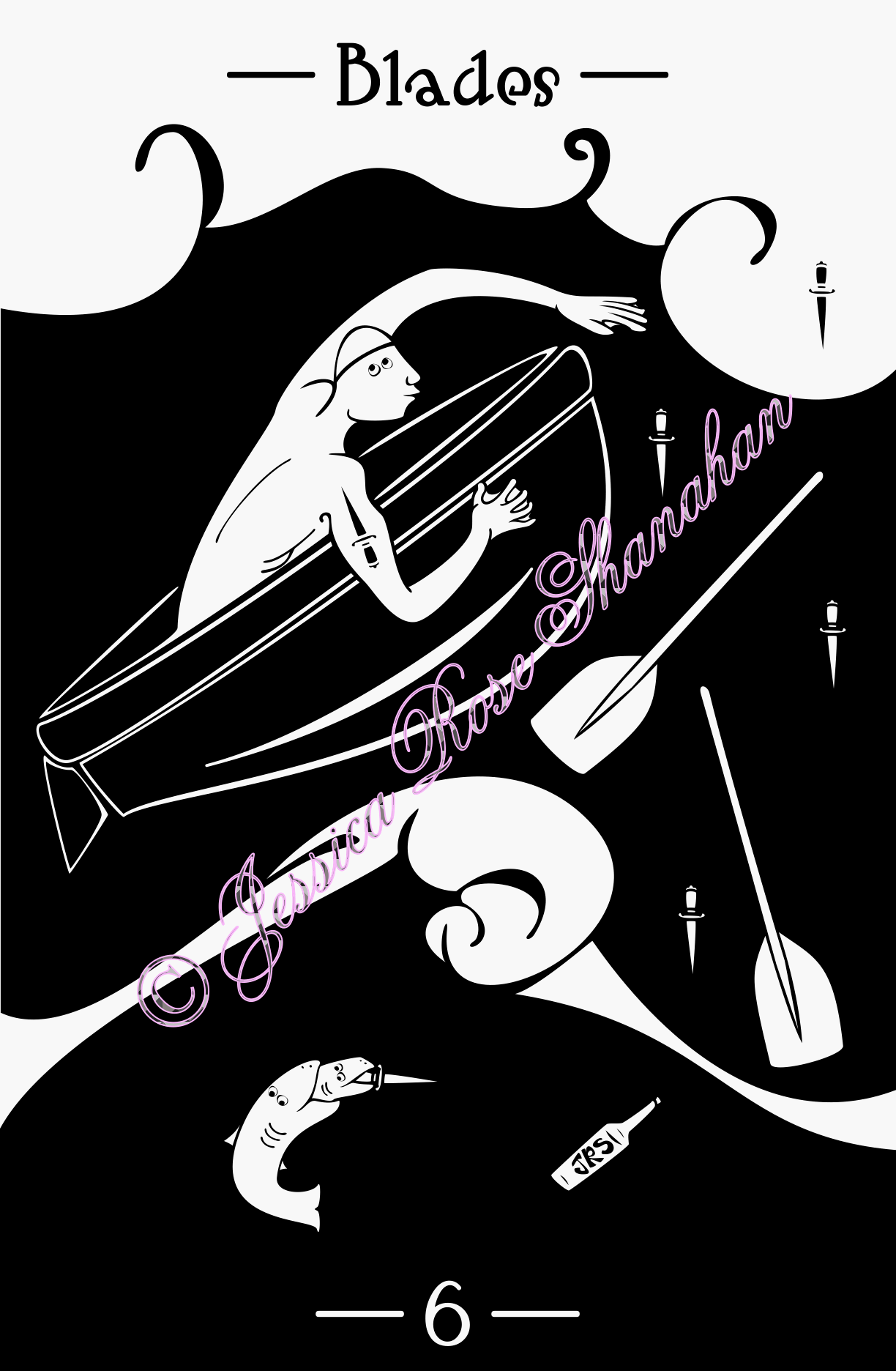 Artist: Jessica Rose Shanahan
Artist: Jessica Rose Shanahan